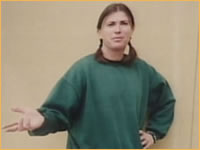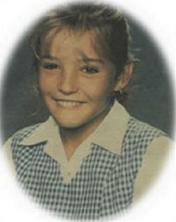
Peter William Sutcliffe, also known as Peter Coonan, and dubbed in press reports as the Yorkshire Ripper as an allusion to Jack the Ripper, was an English serial killer who was convicted of murdering thirteen women and attempting to murder seven others between 1975 and 1980. He was sentenced to twenty concurrent sentences of life imprisonment, which were converted to a whole life order in 2010. Two of Sutcliffe's murders took place in Manchester; all the others were in West Yorkshire. Criminal psychologist Dr. David Holmes characterised Sutcliffe as being an "extremely callous, sexually sadistic serial killer."
A thrill killing is premeditated or random murder that is motivated by the sheer excitement of the act. While there have been attempts to categorize multiple murders, such as identifying "thrill killing" as a type of "hedonistic mass killing", actual details of events frequently overlap category definitions making attempts at such distinctions problematic.

Henry Lee Lucas, also known as The Confession Killer, was an American convicted murderer. Lucas was convicted of murdering his mother in 1960 and two others in 1983. He rose to infamy as a claimed serial killer while incarcerated for these crimes when he falsely confessed to approximately six hundred other murders to Texas Rangers and other law enforcement officials. Many unsolved cases were closed based on the confessions and the murders officially attributed to Lucas. Lucas was convicted of murdering eleven people and condemned to death for a single case with a then-unidentified victim, later identified as Debra Jackson.
Tracey Avril Wigginton, known as the "Lesbian Vampire Killer", is an Australian murderer who achieved notoriety for killing Edward Baldock in 1989, supposedly to drink his blood. This was described as "one of the most brutal and bizarre crimes Australia has ever seen." Wigginton was sentenced to life imprisonment in 1991, and was paroled in 2012.
Sef Gonzales is a Filipino Australian man who was convicted and sentenced to life imprisonment for the July 2001 murders of his father Teodoro "Teddy" Gonzales (46), his mother Mary Loiva Gonzales (43), and his sister Clodine Gonzales (18), in Sydney, New South Wales, Australia. As a result of notoriety surrounding the sale of the house where the crimes occurred, the New South Wales government made it illegal to not disclose information related to the history of a property.
This is a timeline of major crimes in Australia.

John Joseph Joubert IV was an American serial killer executed in Nebraska. He was convicted of murdering three boys in Maine and Nebraska.

Peter Norris Dupas is an Australian convicted serial killer, currently serving three life sentences without parole for murder and primarily for being a serious habitual offender. He has a very significant criminal history involving serious sexual and violent offences, with his violent criminal history spanning more than three decades, and with every release from prison has been known to commit further crimes against women with increasing levels of violence. His criminal signature is to remove the breasts of his female victims.

Paul Charles Denyer is an Australian serial killer currently serving three consecutive sentences of life imprisonment with a non-parole period of 30 years for the murders of three young women in Melbourne, in 1993. Denyer became known in the media as the Frankston Serial Killer as his crimes occurred in the neighbouring suburbs of Frankston.

The murder of Ebony Jane Simpson occurred on 19 August 1992 in Bargo, New South Wales, Australia. Aged nine years, Simpson was abducted, raped, and murdered by asphyxiation when Andrew Peter Garforth drowned her. Garforth pleaded guilty to the crimes and was sentenced to life imprisonment without the possibility of parole.

Richard Edwin Fox was an American murderer who was executed by the state of Ohio for the kidnapping and murder of an 18-year-old college student whom he lured to her death with the fake promise of a job interview. He was also suspected of killing his wife in Oregon in 1983.

Janine Kerrie Balding was a homicide victim who was abducted, raped and murdered by a homeless gang of five on 8 September 1988, in Sydney, New South Wales, Australia. Balding's murder is often compared to the 1986 murder of Sydney nurse Anita Cobby.
Martin Leach, is a convicted rapist and double murderer in Australia, and has been described as one of, if not the Northern Territory's worst, killer.

Sian Kingi was a 12-year-old New Zealand-Australian girl of Maori descent who was abducted, raped and murdered in Noosa, Queensland in November 1987. Barrie John Watts and Valmae Faye Beck, a married couple, were convicted in 1988 of the much-publicised crime. Watts was sentenced to life imprisonment without parole. Beck would have been eligible for parole after 14.5 years, but died while she was still incarcerated.
John Ernest Cribb was an Australian triple murderer from Sydney. At the time of his death, Cribb was serving three consecutive sentences of life imprisonment plus 45 years for the rape and murder of Valda Connell and the murder of her children, Sally and Damien, at Swansea, New South Wales, on 11 August 1978, in addition to numerous other offences.
Kristine Luken was an American Christian who was murdered in a Palestinian terrorist attack on December 18, 2010, while hiking with her friend Kay Wilson in the hills of Jerusalem. Despite multiple stab wounds, Wilson survived the attack; Luken's body was later found by Israeli police, bound and stabbed to death. The Palestinian terror cell that perpetrated the attack were later arrested. During the investigation, the cell members also confessed to the murder of Neta Sorek, whose stabbed body had been found earlier that year near the Beit Jimal Monastery in the Judean Hills. The Palestinian terrorists were convicted of a series of violent crimes.
On 7 November 2011, eighteen-year-old Christie Alexis Lesley Marceau was stabbed to death by eighteen-year-old Akshay Anand Chand at her home in Hillcrest, Auckland, New Zealand. The murder came after Chand had kidnapped and assaulted Marceau in September 2011, and while awaiting trial on the charges, was bailed by the court to an address just 300 metres (1,000 ft) from Marceau's home, despite calls from Christie and the police to not grant bail. Chand was subsequently charged with Marceau's murder, but on 17 October 2012 was acquitted of her murder by reason of insanity. He was subsequently sentenced to three years imprisonment for kidnapping and was committed to a psychiatric hospital indefinitely.
Ezra J. McCandless is an American murderer who was convicted of the murder of Alex Woodworth, who was stabbed 16 times in the head, neck, groin and torso in March 2018.
Ellie Gould was a 17-year-old English sixth form student from Calne, Wiltshire, who was stabbed to death on 3 May 2019 by Thomas Griffiths, a fellow student at her school, who was also 17 at the time. Griffiths stabbed Gould after she ended their relationship of three months. Griffiths was subsequently charged with Gould's murder, and pleaded guilty at Bristol Crown Court, where he was sentenced in November 2019 to life imprisonment with a minimum term of twelve-and-a-half years in custody before becoming eligible for parole. Because he was under 21 at the time of sentencing the law prevented him from receiving a whole life tariff.











